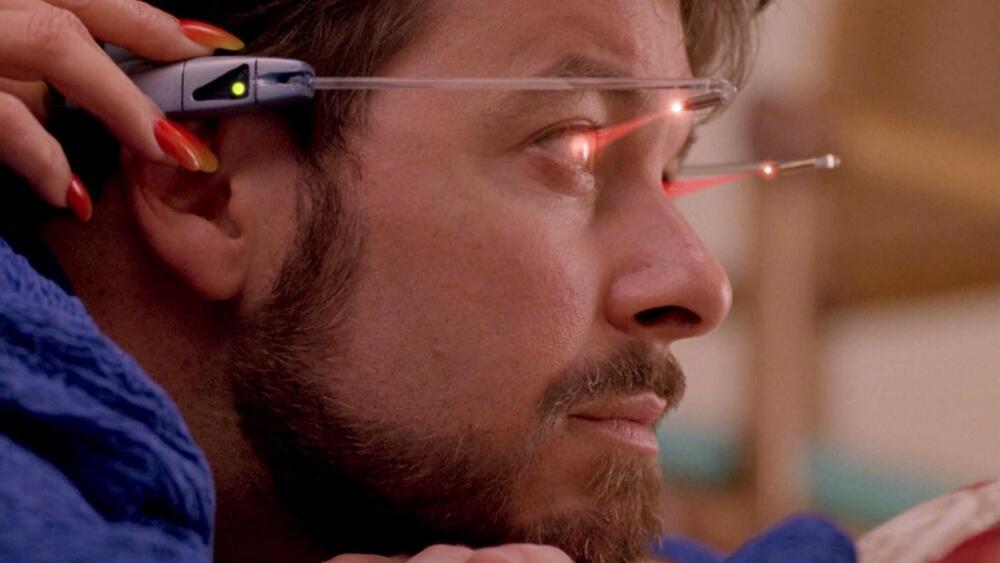You shall be as gods.
Ambient — All sounds created by myself.
https://darkblackcore.bandcamp.com/
https://www.youtube.com/watch?v=oY5SReQ2Kqc.
You shall be as gods.
Ambient — All sounds created by myself.
https://darkblackcore.bandcamp.com/
https://www.youtube.com/watch?v=oY5SReQ2Kqc.
Cylinder Eight by Chris Zabriskie is licensed under a Creative Commons Attribution 4.0 license. https://creativecommons.org/licenses/by/4.0/
Cylinder Five by Chris Zabriskie is licensed under a Creative Commons Attribution 4.0 license. https://creativecommons.org/licenses/by/4.0/
Source: https://chriszabriskie.com/cylinders/
Darkest Child by Kevin MacLeod is licensed under a Creative Commons Attribution 4.0 license. https://creativecommons.org/licenses/by/4.0/
Source: http://incompetech.com/music/royalty-free/index.html?isrc=USUAN1100783
An exploration in nanotechnology and how even as highly advanced as it could be, might show no technosignature or SETI detectable signal, thus if all alien civilizations convert to a nanotechnological existence, then this would solve the Fermi Paradox.
My Patreon Page:
https://www.patreon.com/johnmichaelgodier.
My Event Horizon Channel:
https://www.youtube.com/eventhorizonshow.
Music:

Updated 3 days ago.
What if the best Star Trek video game ever created is one that doesn’t have any graphics? That may sound crazy, but a recent Reddit user used GPT-4 to create an interactive text game based on Star Trek: The Next Generation. It’s the next best thing to using the holodeck for fans who just can’t wait for that next episode of Star Trek: Picard, and you can use their instructions to create your own awesome interactive adventure.
Consider humanity’s astounding progress in science during the past three hundred years. Now take a deep breath and project forward three billion years. Assuming humans survive, can we even conceive of what our progeny might be like? Will we colonize the galaxy, the universe?
Free access to Closer to Truth’s library of 5,000 videos: http://bit.ly/376lkKN
Support the show with Closer To Truth merchandise: https://bit.ly/3P2ogje.
Watch more interviews on the future of humanity: https://closertotruth.com/video/bosni-007/?referrer=7919
Nick Bostrom is a Swedish-born philosopher with a background in theoretical physics, computational neuroscience, logic, and artificial intelligence, as well as philosophy. He is the most-cited professional philosopher in the world under the age of 50.
Register for free at CTT.com for subscriber-only exclusives: https://bit.ly/3He94Ns.

Abstract.
If all aspects of the mind-brain relationship were adequately explained by classical physics, then there would be no need to propose alternatives. But faced with possibly unresolvable puzzles like qualia and free will, other approaches are required. In alignment with a suggestion by Heisenberg in 1958, we propose a model whereby the world consists of two elements: Ontologically real Possibles that do not obey Aristotle’s law of the excluded middle, and ontologically real Actuals that do. Based on this view, which bears resemblance to von Neumann’s 1955 proposal (von Neumann, 1955), and more recently by Stapp and others (Stapp, 2007; Rosenblum and Kuttner, 2006), measurement that is registered by an observer’s mind converts Possibles into Actuals. This quantum-oriented approach raises the intriguing prospect that some aspects of mind may be quantum, and that mind may play an active role in the physical world. A body of empirical evidence supports these possibilities, strengthening our proposal that the mind-brain relationship may be partially quantum.

A new CRISPR tool corrected a genetic mutation that causes vision loss, in an experiment in mice — and its creators at the Wuhan University of Science and Technology (WUST) in China think it could be a safe way to treat countless other genetic diseases in people.
The challenge: Vision starts with light entering the eye and traveling to the retina. There, light-sensitive cells, called photoreceptors, convert light into electrical signals that are sent to the brain.
Retinitis pigmentosa is a rare — and, currently, incurable — genetic disease that can be caused by mutations in more than 100 different genes. These mutations destroy the cells of the retina, leading to vision loss, and for most people, there’s no way to stop the disease or reverse its damage (the exception is a gene therapy approved to treat mutations in the RPE65 gene).

Primordial black holes older than the big bang could rewrite cosmology by providing evidence for a previous universe. It’s a wild idea, but some physicists think we’ve got a chance of finding them.
By Bernard Carr
A Paperclip Maximizer is an example of artificial intelligence run amok performing a job, potentially seeking to turn all the Universe into paperclips. But it’s also an example of a concept called Instrumental Convergence, where two entities with wildly different ultimate goals might end up acting very much alike. This concept is very important to preparing ourselves for future automation and machine minds, and we’ll explore that today.
Visit our Website: http://www.isaacarthur.net.
Support us on Patreon: https://www.patreon.com/IsaacArthur.
SFIA Merchandise available: https://www.signil.com/sfia/
Social Media:
Facebook Group: https://www.facebook.com/groups/1583992725237264/
Reddit: https://www.reddit.com/r/IsaacArthur/
Twitter: https://twitter.com/Isaac_A_Arthur on Twitter and RT our future content.
SFIA Discord Server: https://discord.gg/53GAShE
Listen or Download the audio of this episode from Soundcloud: Episode’s Audio-only version: https://soundcloud.com/isaac-arthur-148927746/the-paperclip-maximizer.
Episode’s Narration-only version: https://soundcloud.com/isaac-arthur-148927746/the-paperclip-…ation-only.
Credits:
The Paperclip Maximizer.
Episode 201a, Season 5 E36a.
Written by:
